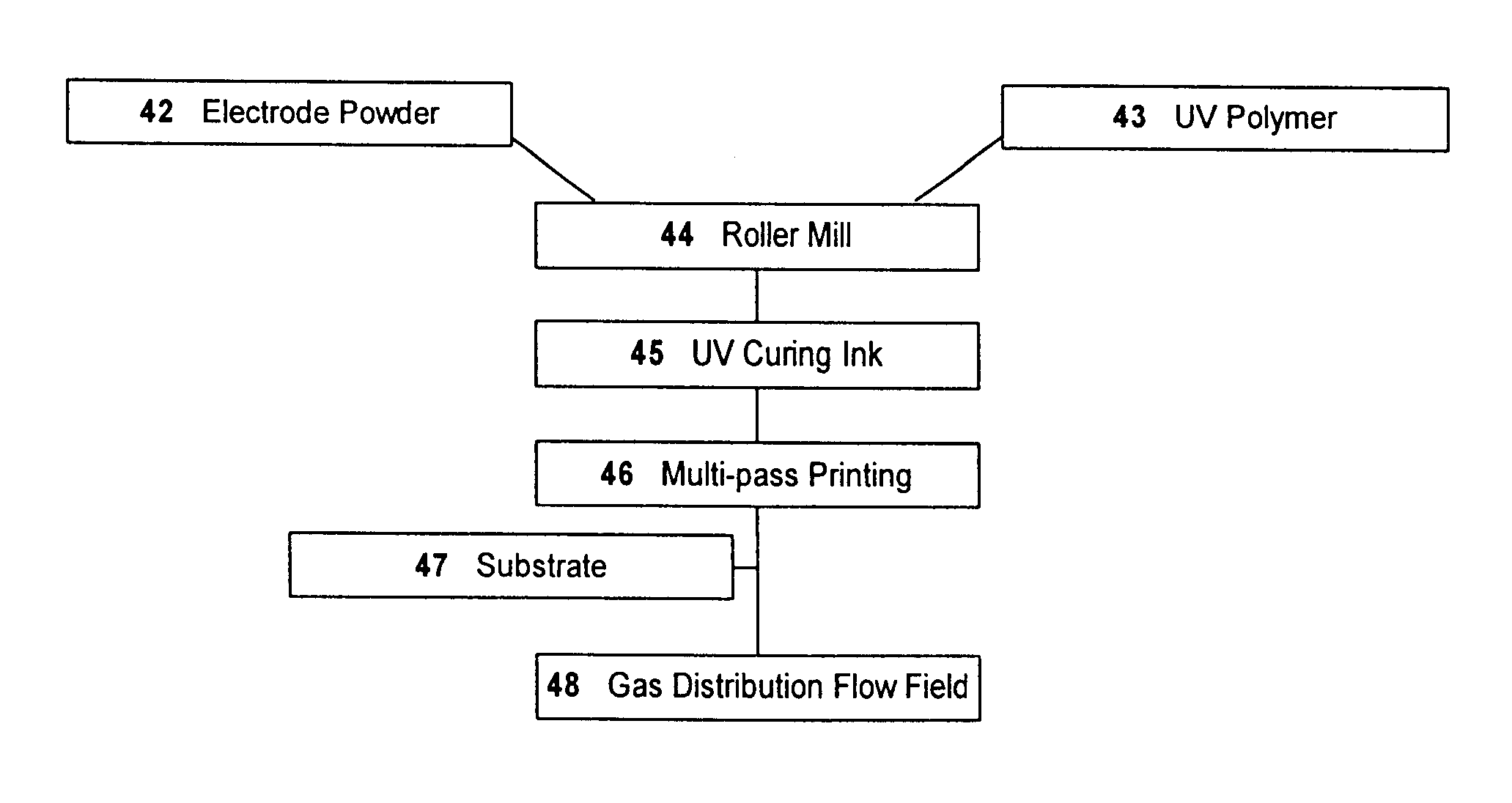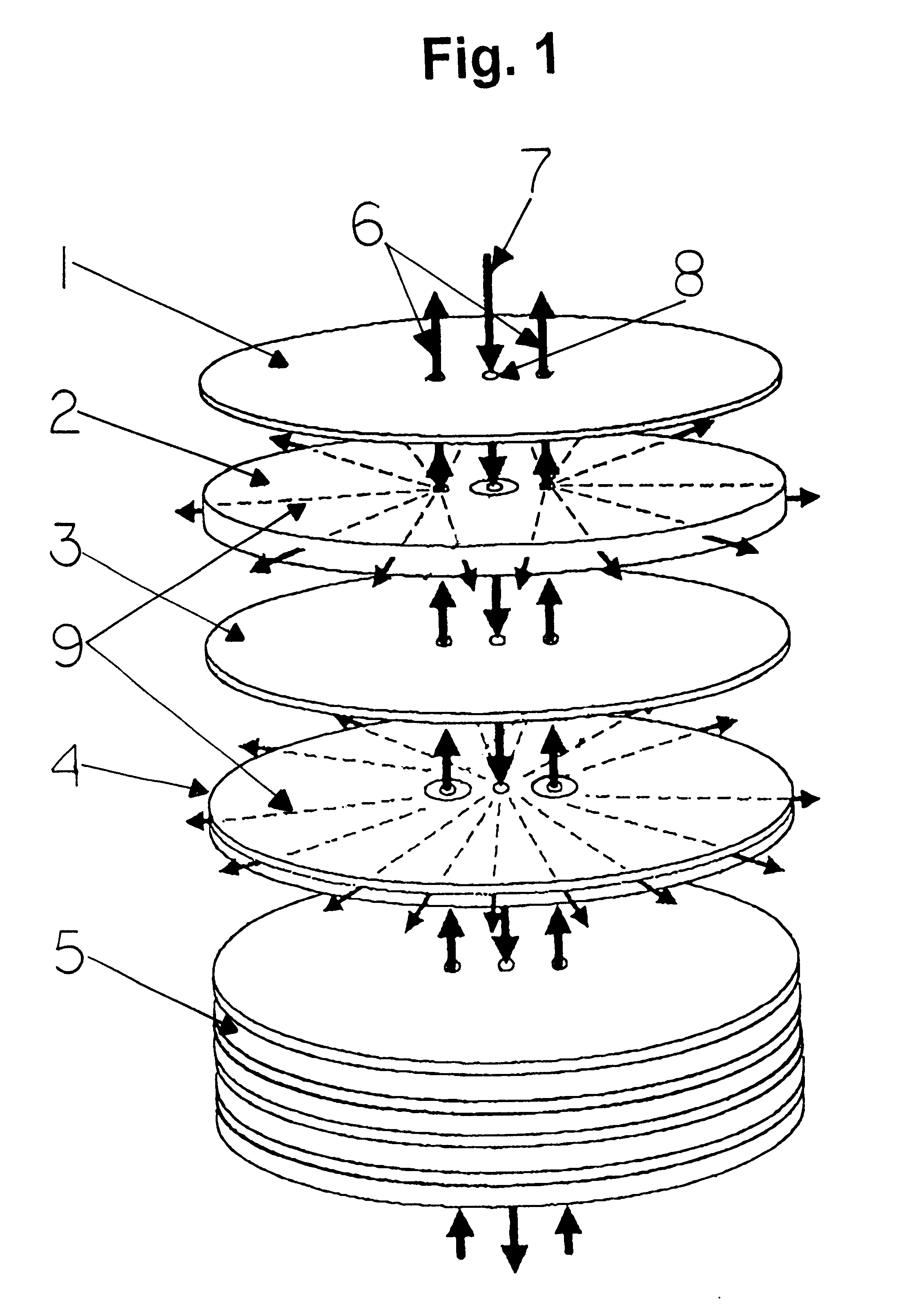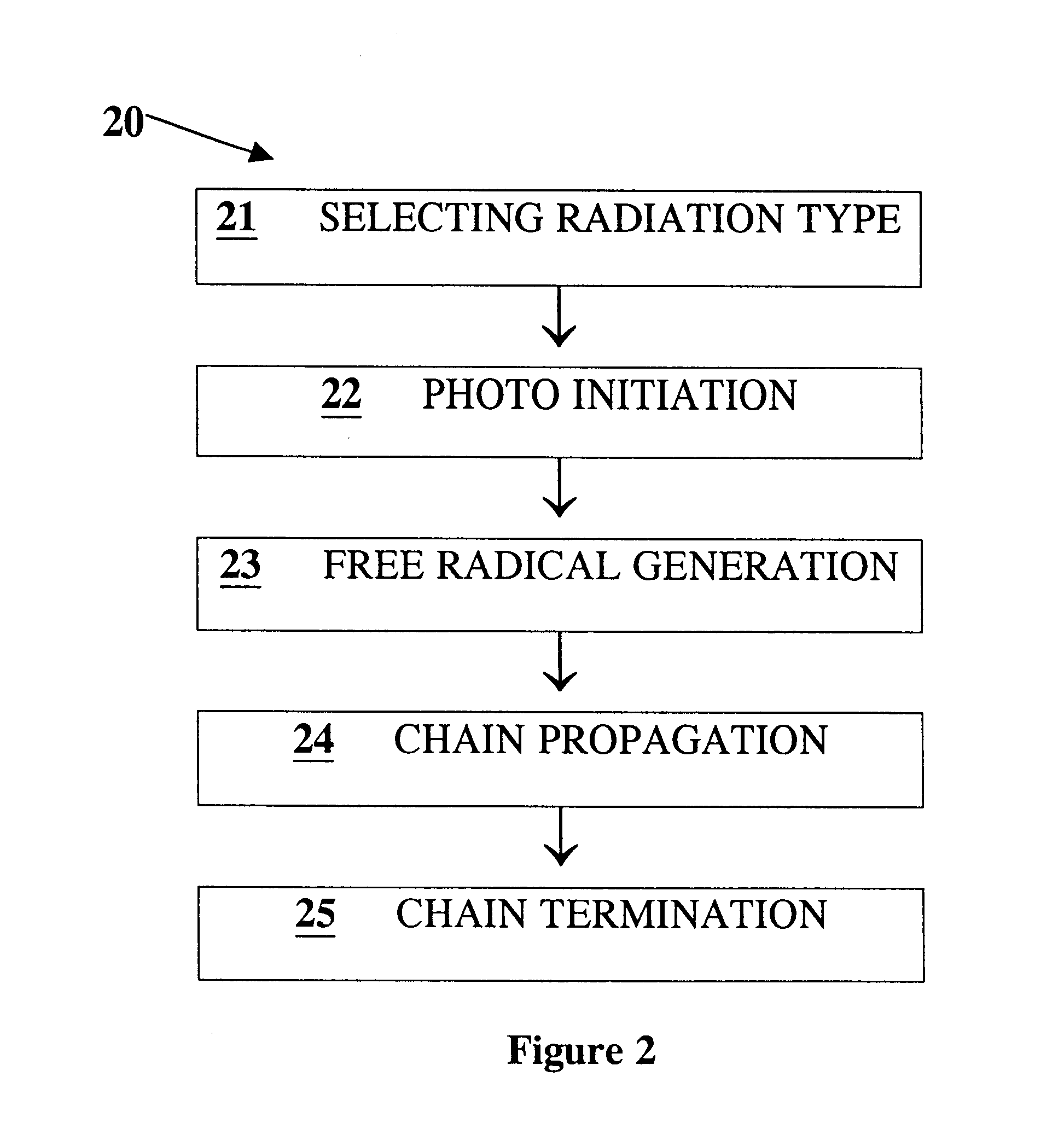Technique for rapid cured electrochemical apparatus component fabrication
a technology of electrochemical apparatus and component fabrication, which is applied in the direction of electrode manufacturing process, cell components, electrochemical generators, etc., can solve the problems of poor layer definition, unsatisfactory yield, and unfavorable method of achieving these goals, so as to reduce production costs, simplify current production process, and reduce waste.
- Summary
- Abstract
- Description
- Claims
- Application Information
AI Technical Summary
Benefits of technology
Problems solved by technology
Method used
Image
Examples
Embodiment Construction
A preferred embodiment for carrying out the invention is a process for the multi-layer fabrication of electrode components for an electrochemical apparatus using a printer. The process provides a concurrent or previous combining of the electrode powder with the polymeric carrier, and applying the combination of electrode powder, polymeric carrier and optionally a catalyst to a substrate using a printing technique and curing the polymeric carrier.
Air or oxygen electrode materials for oxygen reduction cathodes may include cation-substituted lanthanum manganite, cation-substituted lanthanum cobaltite, and cation substituted lanthanum ferrite. These are in the class Re(.sub.1-X) A.sub.X Tm.sub.(1-Y) B.sub.Y O3 is a rare earth such as La, A is another rare earth such as Sm, Pr, Y, Yb or an alkaline earth metal such as Sr, or Ca, Tm is a transition metal such as Co, Fe, Mn, Cr, and B is either another transition metal or Mg, Zn, or Al. Double doping of the rare earth is also possible so t...
PUM
| Property | Measurement | Unit |
|---|---|---|
| Flow rate | aaaaa | aaaaa |
Abstract
Description
Claims
Application Information
 Login to View More
Login to View More - R&D
- Intellectual Property
- Life Sciences
- Materials
- Tech Scout
- Unparalleled Data Quality
- Higher Quality Content
- 60% Fewer Hallucinations
Browse by: Latest US Patents, China's latest patents, Technical Efficacy Thesaurus, Application Domain, Technology Topic, Popular Technical Reports.
© 2025 PatSnap. All rights reserved.Legal|Privacy policy|Modern Slavery Act Transparency Statement|Sitemap|About US| Contact US: help@patsnap.com



